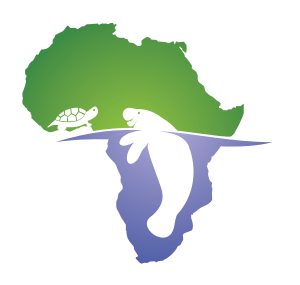Greetings from Angola
At long last, I am here in northern Angola at the mouth of the Congo River. This study has been two years in the making and is a survey effort for manatees, cetaceans (mostly humpback whales and humpback dolphins) and sea turtles. I am working with WCS colleagues who I also collaborate with for work in Gabon, and I’m very happy to be a part of the team here. We are contracted by Angola Liquid Natural Gas for this project, and this is the first study to integrate sighting, acoustic (for cetaceans) and nesting (for turtles) surveys to assess marine mammal and sea turtle diversity and habitat use in northern Angola.
After a long flight from Houston directly to Luanda (the capital of Angola), I took another flight up to Soyo in the northern part of the country and arrived here Tuesday afternoon. I’m staying at the Angola LNG base, which is staffed by Brits, South Africans, Americans and of course Angolans (I’m sure I’m leaving out a few other nationalities). After briefings about safety and life at the base, and meetings with colleagues (several of whom had finished their work for now and were departing just hours after I arrived), I ate an early dinner at the mess hall and passed out from jet lag.
This morning I headed out onto the Congo River with colleague Tim, Brian and Joao from Angola LNG and two boat drivers. Brian is helping to coordinate all our logistics here (which takes a lot considering the varied needs of a group of people who work offshore, nearshore, in rivers and on the beach with all kinds of equipment). Joao is Angolan and is helping by translating for me when I interview people in villages (because there’s no way I’m going to learn Portuguese! Struggling with French in Gabon is about all my poor brain can handle). It’s the end of the rainy season here, and the heat and humidity are intense, but not unlike Florida in mid-summer. The mouth of the river is 15km wide and has a very strong current that flows at 7-8 knots. As the Safety Officer said yesterday, “Fall in and your next stop will be Rio de Janeiro”. It is muddy brown and has lots of floating vegetation, most of which are favored manatee food plants such as water hyacinth and grasses. We traveled up the south side of the river (the north side is Democratic Republic of the Congo), wound through several smaller tributaries and stopped at a Navy outpost and six villages over the course of the day. Everyone was very friendly and readily volunteered information about manatees. I was surprised to find that almost everyone said they are commonly seen, people in two villages described mating herds, others have seen manatees feeding, and no villages had hunters, although several people knew of manatee hunters that came from further upriver. We also found manatee feeding sign at a couple locations. The upshot is that I’m encouraged that there may be more animals here than I predicted to myself before coming (because of Angola’s long war). Hopefully we’ll be able to see some!
 Tim and Joao (front), Brian (in back in the tan cap) enjoying a really nice day on the river.
Tim and Joao (front), Brian (in back in the tan cap) enjoying a really nice day on the river.

 A man at the last village we stopped at, Luamba, drew a manatee in the sand to describe what he has seen.
A man at the last village we stopped at, Luamba, drew a manatee in the sand to describe what he has seen.


I love reading your blog.. I feel like I am there with you!! Need a volunteer:):)
Great to hear about the manatee sightings, hope you’ll get to see some yourself!